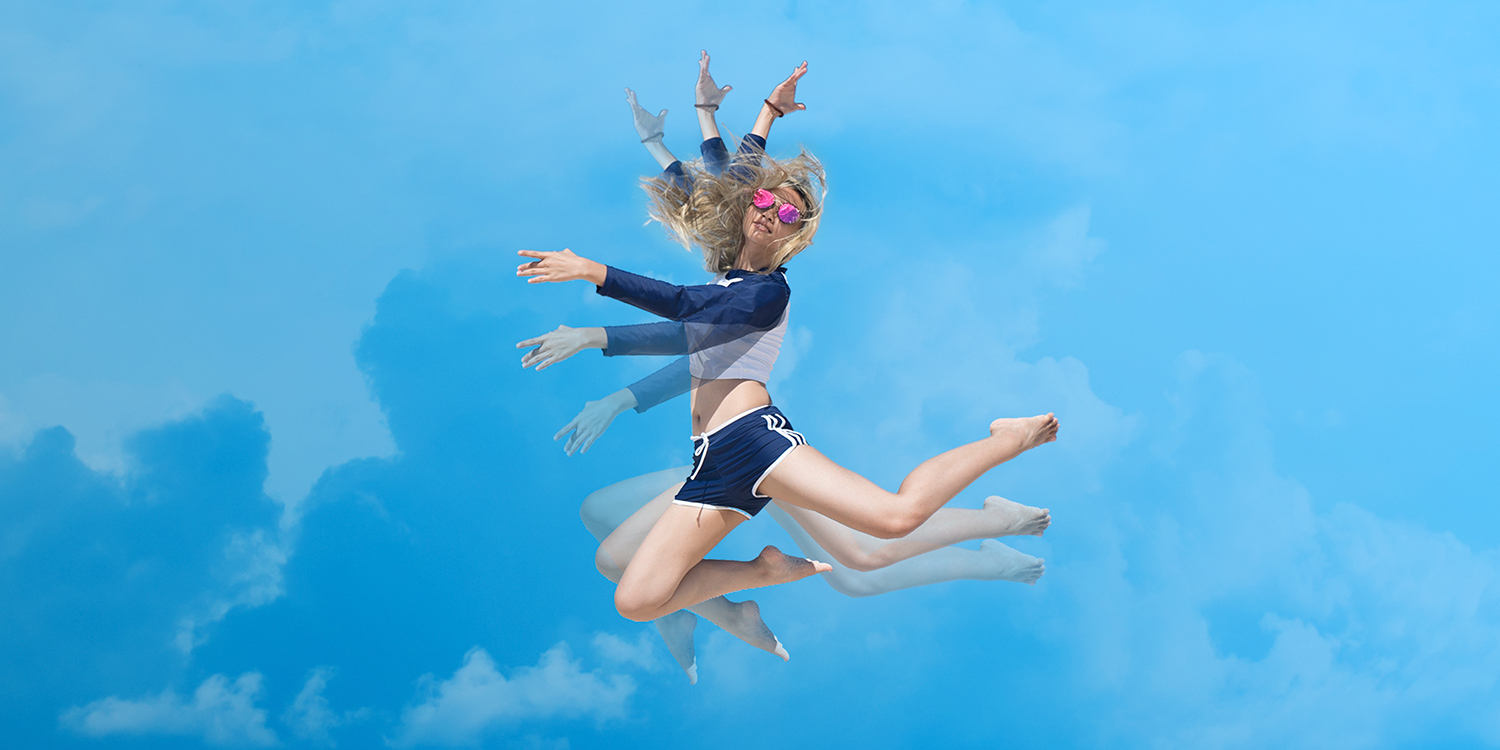A point and shoot camera app from the folks behind popular photo editor Enlight
Price: Free
Version: 1.0.1
Size: 41.0 MB
Developer: Lightricks Ltd.
Platform: iPhone
Update! We thought Enlight Quickshot was almost picture-perfect when we reviewed it a few years ago, but has time been kind to this Camera app replacement?
So what’s new? Well, first and foremost, Enlight Quickshot has a new name – meet Lightleap by Lightricks. While the app is still free to download (same as before), Lightleap has also added a new feature: the option of swapping out the sky in an image with a single tap. It works surprisingly well, with the app automatically identifying a photo’s background and adding in your chosen vista. The less-pleasing news, though, is that beyond that, little else has reached Lightleap other than bug fixes and general improvements. This may not be such a bad thing – as you’ll see below, we loved the original Enlight Quickshot. But as Apple’s built-in Camera app slowly catches up with the competition, it would be a smart move for the app’s developer to push Lightleap even further to the forefront of what iOS-powered photography can offer.
Revised rating: Lightleap is still an all-powerful iOS photography app, and the new sky-replacement feature is great. It retains its original rating. ★★★★½
—–
Our original review, written in September 2017, is presented in its entirety below.
Apple’s built-in Camera app hasn’t changed a huge amount in recent years, leaving third-party developers free to innovate in this area of iOS. One of the latest point-and-shoot apps comes from the folks behind Enlight, a fantastic photo editor for iPhone and iPad. Given their track record, the latest app in the family – called Enlight Quickshot – should be worth a download, right? Let’s find out.
Quickshot offers a handful of standout features which position it as one of the best camera apps on the App Store. And the first of these, rather aptly, is called “Quickshot.”
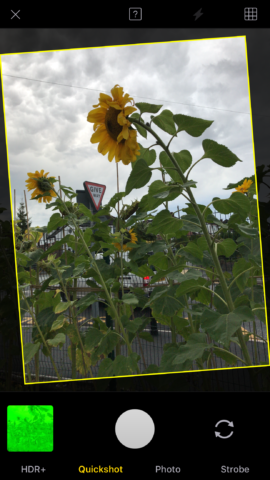
Quickshot mode ships with a number of features, like auto-rotate and auto-crop
In this mode, the app uses artificial intelligence to automatically adjust, straighten, and enhance photos even as you shoot them. Quickshot can sense whether you’re holding your iPhone slightly off-angle, and it can compensate for this by rotating the captured image. This mode works incredibly well, spelling the end for crooked horizons.
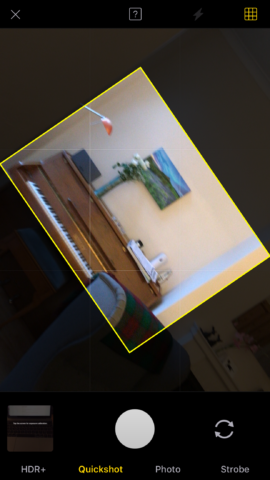
Quickshot can recognize even the most extreme angular errors
The second feature on offer in Quickshot is HDR+. High Dynamic Range (HDR) photography mixes together shots of varying exposure to create the perfect image. Here, the HDR+ mode allows users to calibrate HDR on a per-environment basis. Not only do you see the image configure exposure in real-time, but the app also lets users re-adjust exposure with a simple tap. There’s an HDR capture mode in the standard Camera app, sure, but this one offers much more freedom.
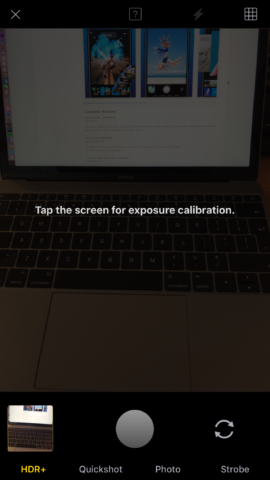
Tapping the screen allows users to adjust exposure in HDR+ mode
Then finally, there’s Strobe mode. Strobe is an interesting addition – it works by shooting a mini-burst of images and layering them together in order to create stylistic shots which track the movement of a subject. The effect works great, although you’ll need something worth photographing using this mode – a gymnast, for instance, or a sporty action show would suit Strobe perfectly.
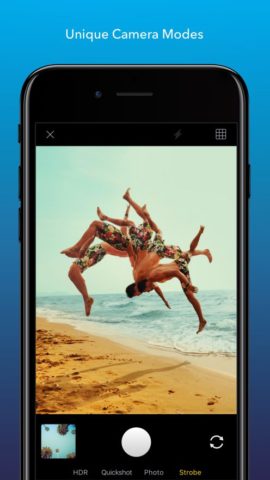
Strobe mode allows users to create impressive, stylistic images
Besides all this, Quickshot also boasts a regular Photo mode (which lets users shoot images without any of the extra techno-functionality) and it allows users to batch-edit their pictures, which comes in handy if you have a full set and want to slap the same filter on the lot.
Although Quickshot is a free download, some features are locked behind a pro upgrade (which begins at $1.99 – or £1.99 – per month). You’re limited to batch-editing three shots unless you upgrade to pro; the upgrade also allows users to create their own filters in the app. However, it’s more than likely that the free app will satisfy all your photo capturing needs. It’s comprehensive enough without the upgrade and works brilliantly.
Enlight Quickshot is a great replacement for the Camera app. It feels natural to use and although there’s a lot of intelligence working under the hood, it doesn’t over-complicate things. You may never use the default iOS Camera again!
